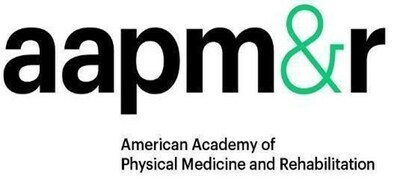Survivors would like to know why you are being so fucking incompetent that you can't cure spasticity!
Send me hate mail on this: oc1dean@gmail.com. I'll print your complete statement with your name and my response in my blog. Or are you afraid to engage with my stroke-addled mind? You'll want it cured when you are the 1 in 4 per WHO that has a stroke and have spasticity?
Guidance for Common Post-stroke Condition of Spasticity Released by the American Academy of Physical Medicine and Rehabilitation
PR Newswire
ROSEMONT, Ill., May 21, 2024
ROSEMONT, Ill., May 21, 2024 /PRNewswire/ -- The American Academy of Physical Medicine and Rehabilitation (AAPM&R) has today released spasticity guidance to establish a framework that reviews treatment options, endorses the highest quality of evidence-based care(NOT CURE!), and encourages research where there are knowledge gaps.
When spasticity symptoms are recognized early, physicians can better manage(Survivors don't want it managed, they want it cured! Are you that much of a blithering idiot you don't understand that?) and treat it through a range of therapies. Leaders solve problems; obviously you are NOT leaders!Spasticity is a group of symptoms characterized by muscle tightening or reduced stretchability following injuries to or conditions affecting the brain and spinal cord, including stroke, cerebral palsy, multiple sclerosis, traumatic brain injury, or spinal cord injuries.
Spasticity symptoms include uncontrollable rhythmic, shaking movements, cramping, spasms, and tight, rigid muscles that cannot be stretched easily and may cause pain. Other symptoms may include incoordination, fatigue, weakness, and impaired motor control.
Spasticity is often delayed and an evolving condition. If left untreated, spasticity can cause muscles to become stuck, leading to joint deformity.
"Physicians have a growing toolbox of treatments for spasticity," said guidance author Dr. Preeti Raghavan, MBBS. "When patients or their caregivers recognize the symptoms of spasticity and seek treatment for those symptoms, we have even better chances to manage(NOT CURE!) and treat their spasticity symptoms through a range of therapies."
The first line of treatment and management interventions aimed at reducing the effects of spasticity is rehabilitative therapy. Simple, non-pharmacologic interventions that facilitate movement and improve function should be attempted before resorting to treatments that carry more risks and side effects.
Therapeutic interventions can be used individually or in combination, including oral medications, injectables such as Botulinum toxin, and surgical options. An integrated, multi-disciplinary, goal-centered management approach is essential to providing long-term, comprehensive care for spasticity.
PM&R physicians are leaders in recovery and regularly care(NOT CURE!) for patients with conditions that cause spasticity, such as rehabilitating patients post-stroke or other conditions causing spasticity. Because of this, PM&R physicians have the necessary specialized equipment, supplies, and prior authorization procedures in place to treat spasticity patients and work with their insurance providers. The guidance is published in the PM&R Journal.
The American Academy of Physical Medicine and Rehabilitation is the national medical specialty organization representing more than 10,000 physicians specializing in physical medicine and rehabilitation. PM&R physicians, also known as physiatrists, treat a wide variety of medical conditions affecting the brain, spinal cord, nerves, bones, joints, ligaments, muscles and tendons. PM&R physicians evaluate and treat injuries, illnesses and disability and are experts in designing comprehensive, patient-centered treatment plans. Physiatrists utilize cutting-edge as well as time-tested treatments to maximize function and quality of life.

SOURCE American Academy of Physical Medicine and Rehabilitation

No comments:
Post a Comment